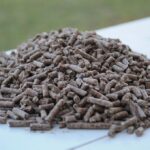3634 fires in ONE day! That is what just one state (Punjab) had on Nov 2 due to stubble burning. This is an increase of almost 20 per cent when compared to last year – despite so many calls around pollution, environment and sustainability. The capital city Delhi has the biggest impact due to this. Other than serious health issues, this has now triggered global embarrassment and likely this topic will feature in the COP-27 meeting at Egypt.
Air quality of Delhi has been deteriorating for quite a while despite what the Central and state governments have been doing for the environment. Pollution levels have increased by more than a third in Delhi when compared to 2021. Most of this is caused by the burning of the remnants (called stubble) of crops like corn or wheat. Both the Punjab and Delhi governments haven’t been able to control stubble burning and is a great international embarrassment for Narendra Modi who is a big champion of the environment.

- Produce ethanol: By fermentation of stubble biomass, ethanol can be produced, which is a strong building block and is also extensively used for human consumption. Government of India is now placing considerable emphasis on ethanol production, as it is targeting 20 per cent ethanol blending with petrol to reduce emissions and also to reduce import dependence on crude oil/natural gas.
- Create an alternate energy source: Stubble is also an important energy source, as it can be made into pellets and used as fuel. India is now facing a huge problem in the energy front, as around 80 per cent of India’s requirement of crude oil and 50 per cent of India’s requirement of natural gas are imported, mostly as fuel sources. With the skyrocketing price of crude oil and natural gas in the global market, the use of stubble as a fuel source can considerably help India in reducing the import dependence on crude oil and natural gas. Pellets provide much more heat; emit less particulate matter and only a fraction of the ash from burning an equivalent amount of coal, These pellets would be a regular and reliable source of income for farmers who can sell their agriculture byproducts. Instead of merely burning the stubble and causing air pollution, the same can be converted to pellets (800 kg of pellets is equivalent to a tonne – 1000 kg – of coal). It is estimated that about 270 million tonne of agricultural waste is available in India/year, which can produce 28,000 MW of power.
- Use as a bio-decomposer: The Indian Council of Agricultural Research (ICAR) has helped develop a microbial liquid spray
that decomposes stubble into manure. The bio decomposer, when sprayed onto paddy stubble, breaks it down so that it can be easily absorbed into the soil and avoid burning stubble. This has been successfully test for over 2 years.
There are always solutions. Let us avoid the political smoke and mirrors and have a clear practical approach on solutions. – N S Venkatraman

 that decomposes stubble into manure. The bio decomposer, when sprayed onto paddy stubble, breaks it down so that it can be easily absorbed into the soil and avoid burning stubble. This has been successfully test for over 2 years.
that decomposes stubble into manure. The bio decomposer, when sprayed onto paddy stubble, breaks it down so that it can be easily absorbed into the soil and avoid burning stubble. This has been successfully test for over 2 years.